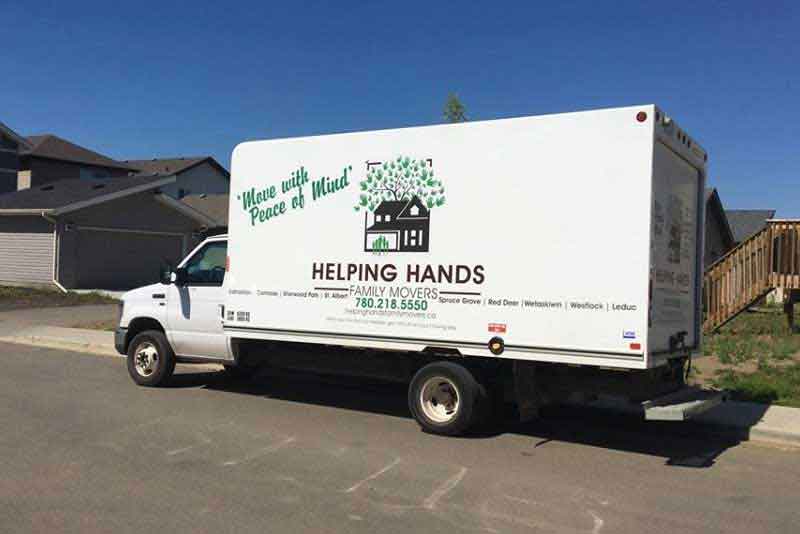Moving during the winter in Edmonton can be intimidating. The snow, ice, and freezing temperatures add a layer of complexity that summer movers never face. Yet, with the right preparation and a calm approach, winter moves can go just as smoothly. We have helped countless families transition through icy streets and cold days, and what we’ve learned is that the secret is not rushing or resisting the season—it’s planning around it.
Understanding the Challenges of a Winter Move
Cold weather changes how everything behaves, from the boxes you pack to the truck you load. Snow can delay schedules, and ice can make heavy lifting more dangerous. The best approach is to accept these realities from the start. Instead of hoping for perfect weather, plan for what’s likely. Have blankets ready, protect delicate items from sudden temperature shifts, and keep a clear mindset. Winter in Edmonton is not the time to depend on luck—it rewards preparation.
Choosing the Right Moving Date
Flexibility matters more in winter than any other season. Weather can shift quickly, and even a single night of freezing rain can turn a smooth move into a challenge. When possible, avoid booking your move too close to critical dates like lease endings or possession days. Give yourself an extra day or two for unexpected delays. Early morning moves are often best because snow and ice tend to melt and refreeze as the day goes on, creating slick conditions by afternoon.
We also suggest watching forecasts a week ahead and confirming with your moving company in Edmonton if conditions require small adjustments. A good mover will keep you updated and help you stay flexible without losing control of your plan.
Preparing Your Home for Moving Day
Before the movers arrive, make sure both your old and new homes are ready for the conditions. Clear driveways and walkways thoroughly. Salt or sand these areas to prevent slips. Inside, place protective coverings like cardboard or old rugs near entrances to keep floors from getting wet and muddy.
If your new home will be empty before the move, turn on the heat at least one day in advance. A cold house can create problems for furniture and electronics, especially if they’ve been outside in sub-zero temperatures. Frozen locks can also slow you down, so check that doorways open easily before the truck arrives.
Protecting Your Belongings from the Cold
Some items are sensitive to extreme cold. Electronics, glassware, and musical instruments can crack or malfunction if exposed for too long. We recommend packing these in insulated containers or wrapping them in blankets. Avoid leaving boxes in the truck overnight. If storage is unavoidable, make sure fragile items are clearly labeled and handled first when unloading.
Plants are another common casualty in winter moves. Even a few minutes in freezing air can kill them. If you must transport plants, keep them in your personal vehicle and minimize exposure to the cold.
Keeping Yourself and the Movers Safe
Winter moves demand awareness of safety. Snow and ice can make lifting heavy furniture more dangerous than usual. Wear boots with strong traction and gloves that protect from both cold and cuts. Dress in layers, since moving is physical work and you’ll warm up quickly once you start carrying boxes.
Stay hydrated even in the cold. Many people forget to drink water in winter, which leads to fatigue faster than expected. Keep hot beverages ready, but avoid spills near packed boxes or slippery floors.
We also recommend keeping a first aid kit nearby. Slips are rare with good planning, but it’s smart to be ready for minor scrapes or bumps.
Planning for the Moving Truck
Moving trucks behave differently in cold weather. Diesel engines may take longer to start, and parking on icy slopes can be risky. If possible, create a clear, flat space near your entrance for the truck to park. Avoid steep driveways, as icy conditions can make them unsafe for loading.
Make sure your movers have access to an outdoor outlet or extension cord for tools or heaters if needed. Check that nearby hydrants or fire lanes remain clear. These small details can prevent last-minute stress on a cold morning.
Managing Time Efficiently
A winter move takes longer, not because movers are slow, but because safety and caution matter more. Budget extra time for every part of the process, from loading to driving to unloading. Roads may be slower, boxes heavier with moisture, and paths harder to navigate.
To save time, keep your most essential boxes—like clothes, toiletries, and bedding—clearly marked and close to the door. That way, even if delays occur, you can settle in for the first night comfortably.
Taking Care of Your Pets During the Move
Animals feel the stress of winter moves too. Keep them in a warm, quiet space during the packing process. When traveling, never leave pets alone in cold vehicles. Arrange for a friend to watch them for a few hours or move them last, once the house is warm and calm again.
Pack food, water, and a blanket for your pets, and keep them in familiar carriers. A calm animal helps keep everyone else relaxed too.
Using Smart Packing Strategies
Winter conditions demand sturdier packing materials. Choose strong boxes that can handle moisture and tape that sticks even in the cold. Plastic bins are a good choice for anything that might get wet. Wrap each item tightly, especially electronics or glass.
For larger furniture, consider shrink wrap. It prevents snow and ice from damaging surfaces during the short trip from the house to the truck. Label boxes with waterproof markers so writing does not smear.
If you need supplies or help with packing materials, talk to your movers ahead of time. They often have weather-appropriate solutions that make the process easier and safer.
Staying Calm Through Unexpected Delays
Even the best-planned winter moves can face delays. Roads may close, trucks may take longer to start, or snow may fall suddenly. When this happens, the best response is to stay calm and adjust. Stress never helps in freezing temperatures—it only makes small problems feel bigger.
If your timeline shifts, keep essentials with you. That includes warm clothes, chargers, medication, and documents. You’ll feel more in control knowing you can handle an extra night without unpacking everything.
How to Handle Utilities and Deliveries
Cold-weather moves often overlap with utility transfers. Always call your utility providers several days before your move to ensure heating and electricity are active when you arrive. Double-check on moving day that both heat and lights are working.
Mail and deliveries also matter. Snowy driveways can confuse delivery drivers, and boxes left outside may freeze. Update your address early to avoid complications.
A Small Detail That Makes a Big Difference
One often-overlooked trick is to keep a small space heater in the main room you’ll unpack first. It creates a warm spot to rest between loads and helps speed up comfort once you arrive. It’s also useful if the furnace takes time to warm up the house.
When to Ask for Help
There’s no need to face a winter move alone. Professional movers understand how to protect items, manage timing, and stay safe in icy conditions. If you want to save your back and your nerves, reach out to people who do this regularly. For experienced, local movers you can trust, visit moving company in Edmonton.
If you already have a move scheduled and want guidance or need to adjust your booking, don’t hesitate to contact us. We’ll work with you to make sure the day stays organized and as stress-free as possible.
FAQ
How early should I book a winter move in Edmonton?
It’s best to book at least two to three weeks in advance. Winter schedules can fill up quickly due to limited daylight and weather unpredictability.
What should I do if a snowstorm hits on my moving day?
Stay in touch with your movers. They will assess road conditions and advise whether to delay or adjust start times for safety.
Can freezing temperatures damage my furniture?
Yes, moisture and extreme cold can harm wood, glass, or electronics. Protect items with blankets and avoid storing them in unheated trucks for long periods.
How can I keep my home clean during a snowy move?
Use old rugs or cardboard at entry points and have one person wipe shoes or boots before stepping inside. Keeping towels nearby also helps reduce melted snow.
Do movers still work during heavy snowfall?
Yes, as long as it’s safe to travel. Professional movers are equipped for winter conditions but may take extra precautions or slow down slightly to ensure safety.






